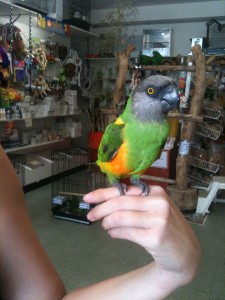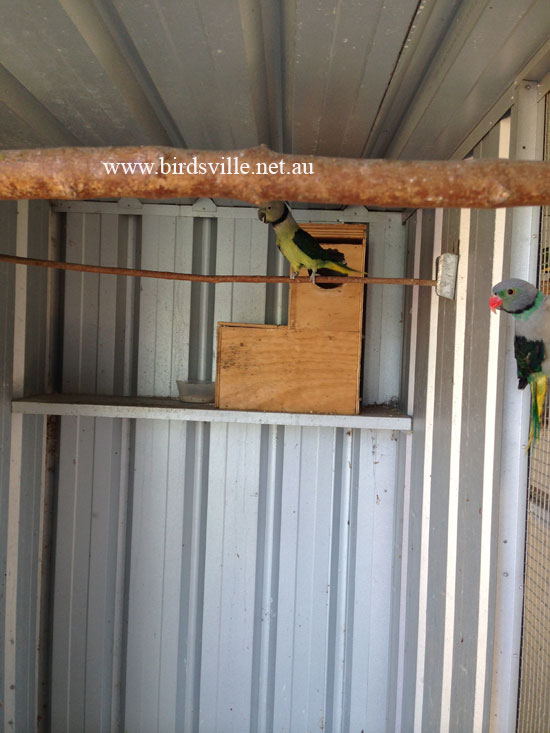 Senegal Parrot care Sydney
Senegal Parrot care Sydney
The Senegal parrot is a compact bird, measuring about 10 inches (26cm) in length and weighing between 120 and 140 grams. These birds come in two different subspecies – the nominate Senegal Parrot and the Sierra Leone Parrot, which has a paler chest. They have dark green feathers covering their body, with a grey head and yellow to orange eyes. It’s essential to note that determining male or female can be challenging without DNA testing, as these birds have no distinguishing physical differences.
These birds are intelligent and social creatures that thrive on attention and affection from their owners. They are known for their silly antics and playful nature, making them a delightful addition to any home. Senegal Parrots often build strong bonds with one specific person, which can lead to issues if left untrained. Engaging in training and socialization is hence incredibly important to establish a strong and trusting relationship between the bird and the owner.
As social creatures, they need to be located in a room where they can feel included in the family activities. However, it’s important to note that they can get overwhelmed by noise, making it essential to have a quiet corner for when they need alone time.
You should provide your Senegal Parrot with a well-balanced diet that includes a nutritionally balanced mix of formulated pellets and fresh fruits and vegetables. Overconsumption of seeds can lead to obesity and related health issues. Offering fresh, clean water daily is equally important to keep your pet healthy and hydrated.
Worming- have you wormed your bird?
Your bird will need to be wormed in a few weeks to two month after being taken home check with the staff from Birdsville, when purchasing). Young birds that have been recently weaned have a delicate bacteria’s developing in there gut, worming at this stage could harm the bacteria’s development and your new bird. Worming will need to be done
every 6 month. Worming your bird is essential for the health of all parrots in captivity.
Lice & Mites
These are the two most common parasites of cage birds and their environment, but are easily controlled with a Mite and Lice spray, available at Birdsville. When using spray, spray bird, entire cage, perches, nesting box and toys, remember to remove all water and feed and avoid spraying in birds’ eyes. Your bird Lice and mite bottle will explain how to use, remember avoid the mouth and eyes.
Training Your Bird
Training is an important factor of having a well behaved hand raised bird. When you first get the bird home, let it settle down and get use to their new environment for a day or two. After these initial days, the bird should be handled in a quiet, relaxed situation. Spending time with your bird while watching TV or reading is perfect, but don’t over stress your bird in the first few weeks of taking it home, babies need their rest. The more time you spend with your bird, the better your bird will become.
When doing any training there are three basic concepts to keep in mind.
- When the bird does something good –> give it a reward
- When the bird does something undesirable –> ignore it
- Never punish your bird
Start training your bird with a simple command, like step up.
Have the bird on one hand, place the other hand against the birds’ chest and say the command, step up, as you apply a slight pressure to the birds’ chest. The bird will then put one leg up, pull slightly up with the second hand and the other leg will follow, reward your bird with a treat, like a favorite fruit, seed or nut. Then repeat, as the bird gets better, get it to step up a few times before rewarding. Once your bird catches on to it, instead of rewarding it with food, reward it with praise. This will soon become second nature to the bird.
It is important not to overdo the training, keep it short, but frequent.
What to Look for When purchasing a Senegal parrot
When you are ready to purchase, you’re a Senegal Parrot, here are so few hints for what to look for.
- Eyes – should be bright and clear, there should be no discharge, swelling or redness. If the eyes that are runny, squinty, or discolored can be an indication of infection.
- Condition- This is very important and should be understood by any bird owner as a bird handler every time I touch any bird I feel the bird’s condition by touching the birds keel bone which is underneath the bird this is the anchor where the birds large wing muscles attach to allow the bird to have strong wing muscles for flight. When a bird is unwell the first thing that usually happens is they lose weight, and their breast muscle becomes very light on. Because of birds very high metabolic rate they can lose weight very quickly and become ill so this should be checked by bird owners on a regular basis especially if they see there bird not as active as normal.
- Mouth and beak – should be clean and
- Mouth and beak – should be clean and free of injury, no lesion, wetness or build up insider the mouth. The beak should not be overgrown.
- Nose, nostrils’ or cere – should be open and free of discharge.
- Feathers – the bird should be fully feathered and sleek with a smooth appearance. Depending on the age, sometimes the tail feathers will be somewhat ragged due to young birds regularly walking through there wet food and having them rub on objects and wire.
- Wing Clipping – if wings are clipped, both wings should be clipped, not just one and all outer feathers should be cut. If the last two outer feathers are not cut the bird could injure themself and if only one wing is only clipped the bird still may fly, just lopsided and cause injury when landing. Birdsville will clip wing for free with any purchase.
- Weaning – it is highly recommended, if you don’t have hand raising experience, only weaned birds should be bought. Hand feed might look and seem like a simple process, but it can be easily done incorrectly and time consuming. Mistakes when hand feeding can cause irreversible harm and even lead to death of the young bird. Alway choose birds that are fully weaned and eating independently. Your bond with the bird will not suffer for it in the least.
- Voracious eaters – observe the birds that you’re interested in, and you should look for birds that are the most voracious eaters. Choose a bird that displays a large appetite. This is an indication of good general health and well-being.
- Poo on the vent (anus) – there should be no staining or fecal matter on the feathers around the vent.
- Leg – should look clean.
- Clean enclosure – the enclosure where the birds are kept should be clean and hygienic, to reduce the likeliness of illness or infection.
- Active and alert – The bird should be active and alert. If it appears sluggish or weak it could be ill or to young to be feeding on its own.
Senegal Enrichment
Toys are used as a form of environmental enrichment, but enrichment shouldn’t stop there. As an ex-zookeeper it was a major concern that all animals must have a variety environmental enrichment to keep the critters entertained. This is in no way different for anyone who has a tame parrot at home. Enrichment is important because parrots simply cannot thrive with only perches, food and water. The fact is birds provided with enrichment are unlikely to developed psychological problems such as self-mutilation, feather plucking and excessive squawking. Enrichment WILL in fact effect your bird in a positive way with its mental and physical development when training your bird, you will actually end up with a better, less fearful, friendlier and relaxed bird which will be more easily trained. Enrichment can be chew toys, play toys, leather toys, acrylic plastic toys, wooden toys, shredding toys, ropes, swings, ladders, bells, balls, birdie balls, plain card board, small boxes, wicker baskets, tray of wheat grass, plants, bird baths, different foods, food kabobs, nuts, (all available at Birdville) You may also find in your local area pine cones, hide food inside pine cones, twigs, bendy branches, flowers and branches- safe flowers are bottle brush, grevilia, eucalypt melaleuca flowers, hibiscus, marigolds, dandy lions leaves and all, roses, violets to name a few.
Note anything found outside should be disinfected and nonpoisonous and toys must be nontoxic.
Enrichment tip- the trick to keeping them entertained is regularly rotating toys as they will become bored with the same toy in their cage day after day. Changing them regularly will create interest for your bird as if they are receiving a whole new toy to play with.



